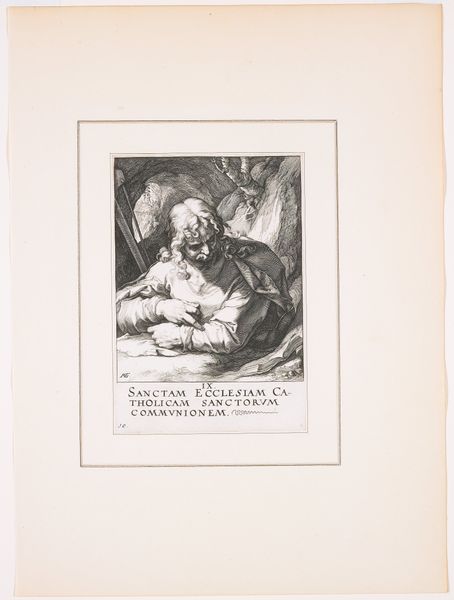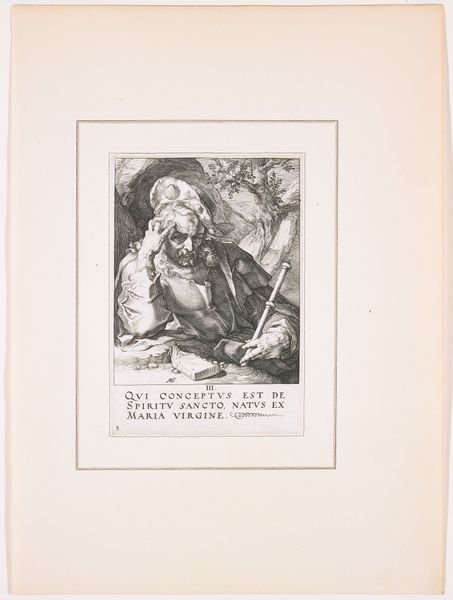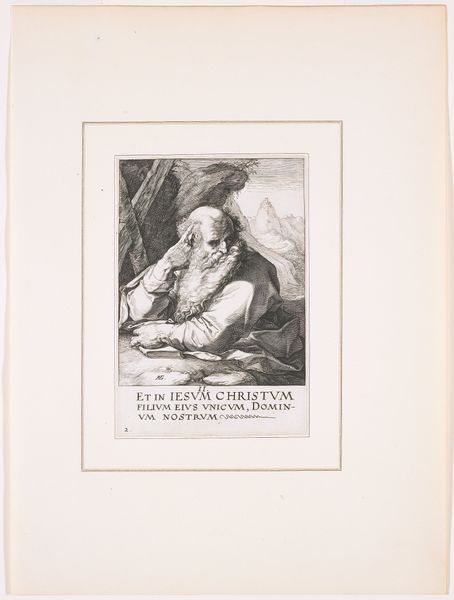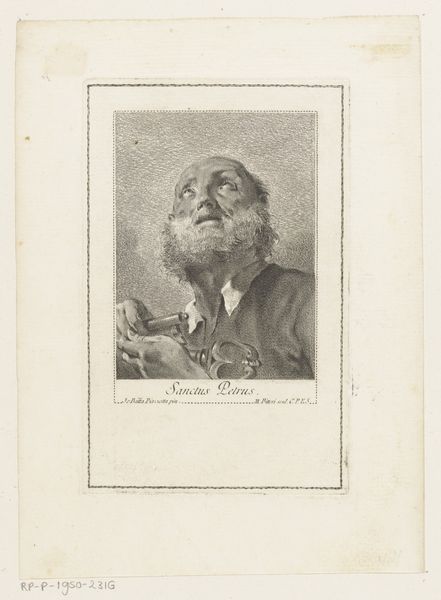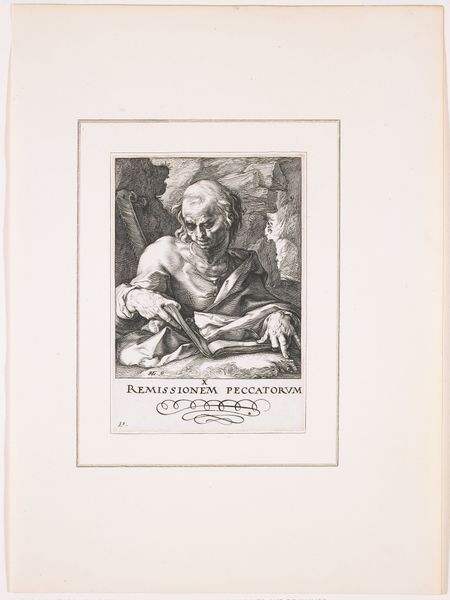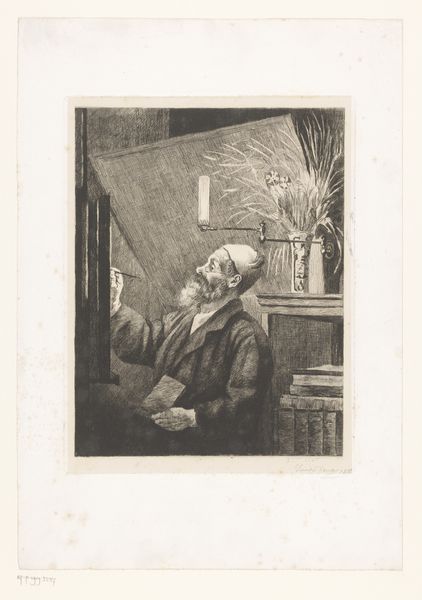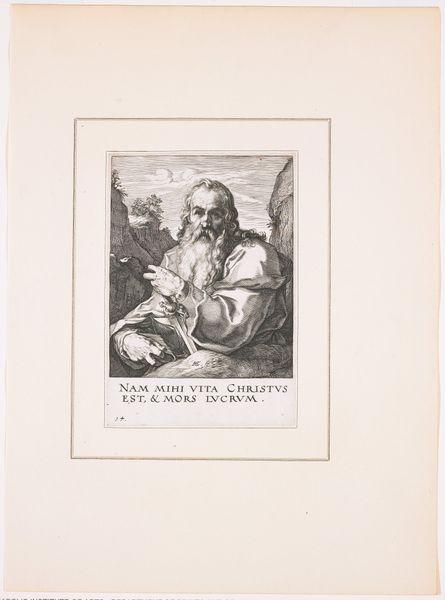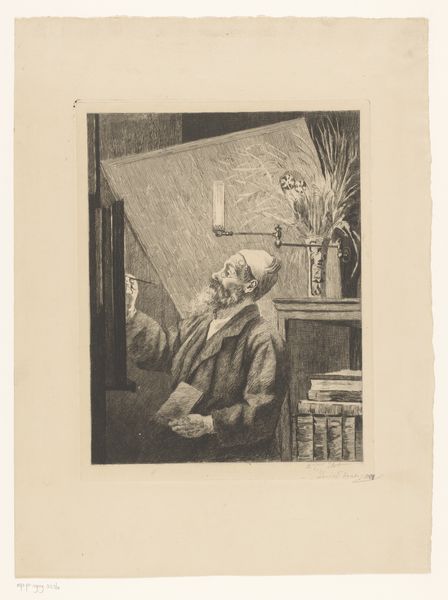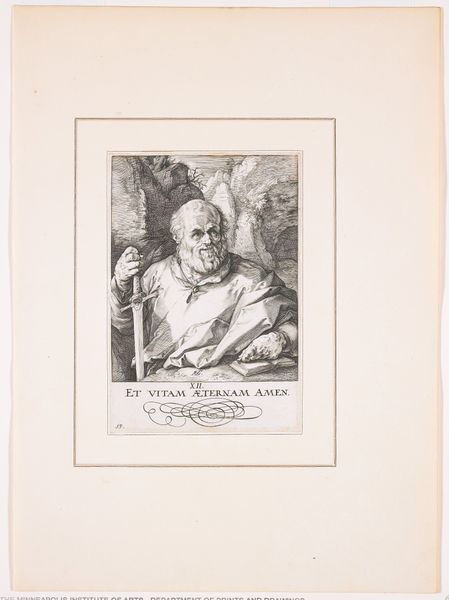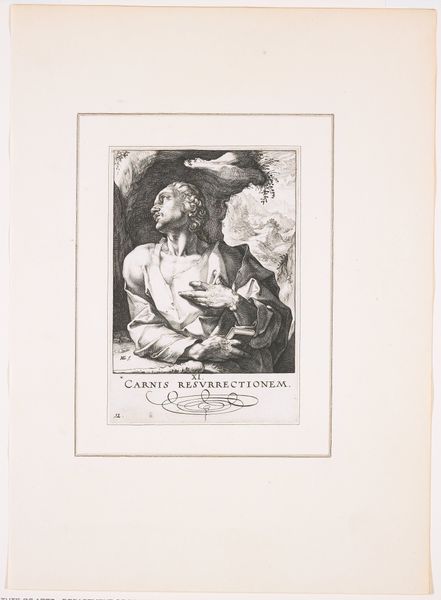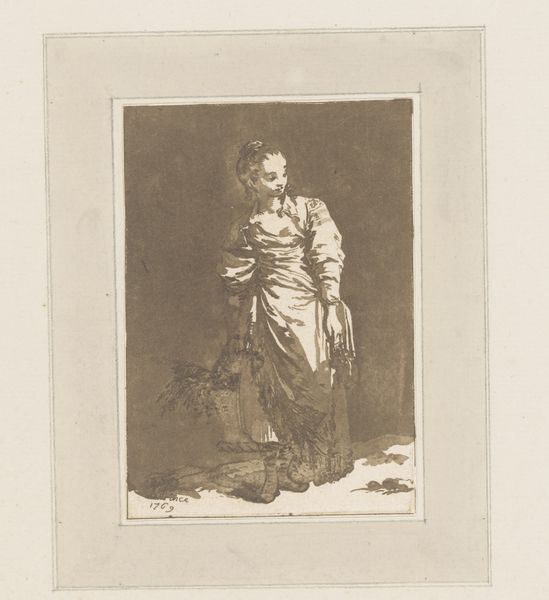
print, paper, engraving
#
portrait
# print
#
figuration
#
paper
#
line
#
history-painting
#
northern-renaissance
#
engraving
Dimensions: 5 7/8 x 4 1/16 in. (14.92 x 10.32 cm) (sheet)12 1/2 x 9 3/16 in. (31.75 x 23.34 cm) (mount)
Copyright: Public Domain
Curator: Hendrick Goltzius created this engraving, titled "Saint Peter," in 1589. The print depicts the saint in a moment of devotion, his eyes turned upwards, hands clasped. What strikes you about it initially? Editor: The upward gaze immediately conveys a sense of yearning. His expression seems less about certainty and more about searching for something, maybe struggling even, which is a powerful mood, considering he’s considered a cornerstone of the church. Curator: Yes, there is a vulnerability there. Consider the time, though: The late 16th century was wracked by religious conflict, and the idealized images of saints were under intense scrutiny. I think this work reveals that uncertainty, presenting a more human Saint Peter wrestling with his faith amid upheaval. This reflects broader societal questions around authority. Editor: The keys at his side – they look so heavy and elaborate! Symbolically, they represent Peter's authority, sure, the keys to the Kingdom of Heaven. But in that setting, they feel more like a burden, almost weighing him down. There is also the book inscribed with Latin text, adding another layer to the iconography. Curator: Absolutely. Goltzius masterfully used line engraving to create not just form but also texture and shadow. It gives Peter’s face, particularly his eyes and lined forehead, so much expressiveness. The grotto also creates an impression that he is turning away from society. You are so right to focus on the weight of those symbols. The imagery is clearly a statement on the weight of doctrine. Editor: I’m wondering, what message was intended by presenting St. Peter so close to what seems to be the entrance to the underworld? In essence, Goltzius positions Peter's devotion within a complex historical frame and, it seems to me, acknowledges the challenges to institutional belief structures. It certainly provides a lot to consider regarding that relationship. Curator: Seeing how Goltzius combined symbolic weight with human emotionality deepens my appreciation. He managed to convey both authority and vulnerability, a dichotomy that is essential to understanding historical and social struggles during that era.
Comments
minneapolisinstituteofart almost 2 years ago
⋮
The Dutch Mannerist Hendrik Goltzius was the leading printmaker of his time. A virtuoso engraver, innovative woodblock cutter, and superb draftsman, Goltzius continues to inspire awe with his wondrous technique and to convert even the most jaded art spectators to print enthusiasts. This print is from a series of fourteen engravings—"Christ, the Twelve Apostles, and Paul"—executed in 1589 when Goltzius was at the height of his powers. The series is a kind of demonstration piece displaying Goltzius's unrivaled technique and boundless imagination.
Join the conversation
Join millions of artists and users on Artera today and experience the ultimate creative platform.
